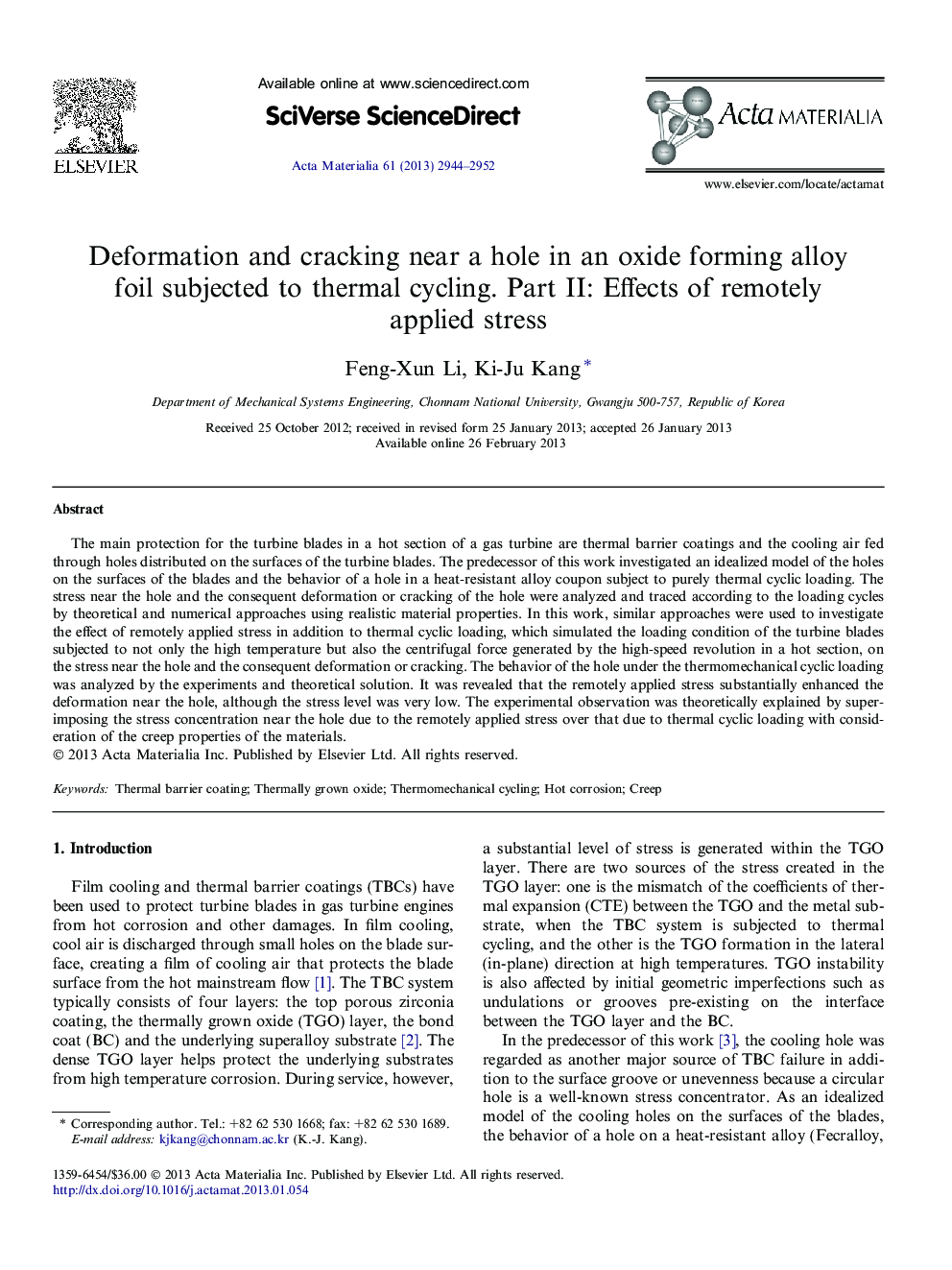| Article ID | Journal | Published Year | Pages | File Type |
|---|---|---|---|---|
| 10620282 | Acta Materialia | 2013 | 9 Pages |
Abstract
The main protection for the turbine blades in a hot section of a gas turbine are thermal barrier coatings and the cooling air fed through holes distributed on the surfaces of the turbine blades. The predecessor of this work investigated an idealized model of the holes on the surfaces of the blades and the behavior of a hole in a heat-resistant alloy coupon subject to purely thermal cyclic loading. The stress near the hole and the consequent deformation or cracking of the hole were analyzed and traced according to the loading cycles by theoretical and numerical approaches using realistic material properties. In this work, similar approaches were used to investigate the effect of remotely applied stress in addition to thermal cyclic loading, which simulated the loading condition of the turbine blades subjected to not only the high temperature but also the centrifugal force generated by the high-speed revolution in a hot section, on the stress near the hole and the consequent deformation or cracking. The behavior of the hole under the thermomechanical cyclic loading was analyzed by the experiments and theoretical solution. It was revealed that the remotely applied stress substantially enhanced the deformation near the hole, although the stress level was very low. The experimental observation was theoretically explained by superimposing the stress concentration near the hole due to the remotely applied stress over that due to thermal cyclic loading with consideration of the creep properties of the materials.
Related Topics
Physical Sciences and Engineering
Materials Science
Ceramics and Composites
Authors
Feng-Xun Li, Ki-Ju Kang,
